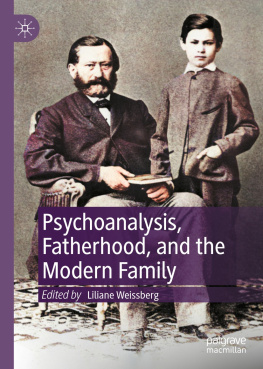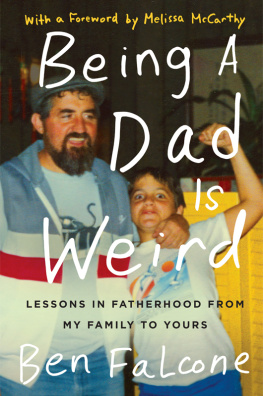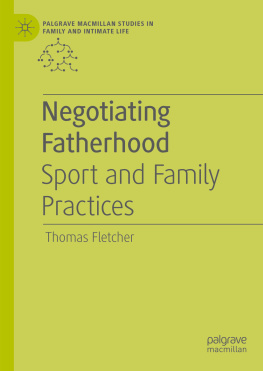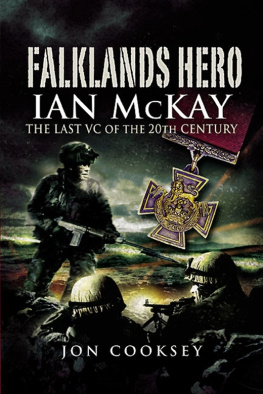Holding On
Holding On
Family and Fatherhood during Incarceration and Reentry
Tasseli McKay, Megan Comfort, Christine Lindquist, and Anupa Bir

UNIVERSITY OF CALIFORNIA PRESS
University of California Press, one of the most distinguished university presses in the United States, enriches lives around the world by advancing scholarship in the humanities, social sciences, and natural sciences. Its activities are supported by the UC Press Foundation and by philanthropic contributions from individuals and institutions. For more information, visit www.ucpress.edu.
University of California Press
Oakland, California
2019 by Research Triangle Institute, d/b/a/ RTI International
Library of Congress Cataloging-in-Publication Data
Names: McKay, Tasseli, 1978 author. | Comfort, Megan, author. | Lindquist, Christine, author. | Bir, Anupa, author.
Title: Holding on : family and fatherhood during incarceration and reentry / Tasseli McKay, Megan Comfort, Christine Lindquist, and Anupa Bir.
Description: Oakland, California : University of California Press, [2019] | Includes bibliographical references and index. |
Identifiers: LCCN 2018058270 (print) | LCCN 2019000208 (ebook) | ISBN 9780520973312 (ebook) | ISBN 9780520305243 (cloth : alk. paper) | ISBN 9780520305250 (pbk. : alk. paper)
Subjects: LCSH : Male prisonersFamily relationshipsUnited States. | Prisoners families. | FathersEffect of imprisonment on.
Classification: LCC HV 8886. U 6 (ebook) | LCC HV 8886. U 6 M 35 2019 (print) | DDC 362.82/950973dc23
LC record available at https://lccn.loc.gov/2018058270
Manufactured in the United States of America
28 27 26 25 24 23 22 21 20 19
10 9 8 7 6 5 4 3 2 1
CONTENTS
ILLUSTRATIONS
FIGURES
1316.
A-1.
BOX
TABLES
A-1.
A-2.
A-3.
A-4.
A-5.
A-6.
A-7.
A-8.
A-9.
A-10.
A-11.
A-12.
A-13.
A-14.
ACKNOWLEDGMENTS
This book was made possible by so many generous and visionary efforts for which the authors are deeply grateful. The stories, insights, and experiences shared with us by participants in the Multi-site Family Study on Incarceration, Parenting and Partnering enabled a new understanding of family life in the context of criminal justice system involvement. We were incredibly fortunate to have had the opportunity to learn from the wisdom and life experiences of individuals and families who had developed this understanding for themselves under profoundly challenging circumstances and often at great cost.
The Multi-site Family Study would not have been possible without the support of the U.S. Department of Health and Human Services, Office of the Assistant Secretary for Planning and Evaluation (ASPE) as well as the Office of Family Assistance (OFA) in the Administration for Children and Families. In particular, this work was enabled by the vision and leadership of Linda Mellgren, Erica Meade, and Jennifer Burnszynski of ASPE and Charisse Johnson of OFA.
In carrying out the study, the four of us were lucky to be joined by a larger team of skilled and committed researchers. The contributions of Justin Landwehr, Erin Kennedy, Danielle Steffey, Stephen Tueller, Derek Ramirez, Kate Krieger, Rose Feinberg, Azot Derecho, and Chris Carson were invaluable. We were also lucky to be guided by many leading thinkers in this field, including Jacinta Bronte-Tinkew, David Cordray, Justin Dyer, Felix Elwert, Maria Kefalas, Wendy Manning, Howard Markman, Kristin Moore, William Oliver, Jeff Smith, and Alford Young and especially for the ongoing and dedicated involvement of Randal Day, Creasie Finney Hairston, Joe Jones, John Laub, Anne Menard, Christy Visher, and Oliver Williams over many years. The work of creating this book was supported and guided by our leadership at RTI International, including Pam Lattimore, Gary Zarkin, Amy Roussel, Robin Weinick, Meera Viswanathan, and Paul Biemer, to whom we are deeply grateful. We were also lucky to have the editing support of Nathan Yates and Felicity Skidmore and the creativity of Ed Roberts to get us over the finish line.
Finally, we are thankful for the phenomenal energy and vision that Maura Roessner brought to this project as our editor and to all the staff at University of California Press who have contributed to bringing it into print.
CHAPTER ONE
Returning Incarcerated Fathers to the Family
JOEYS STORY
Under the harsh glare of fluorescent lights, during an interview in prison less than a week before his scheduled release, Joey, a father of four, recalled the precious early days of his youngest childs life. Already on the run [his words] at that time for multiple crimes but not yet apprehended, Joey described himself as yearning to bond with his infant daughter. She was not with her mother, whose pregnancy had included a struggle with addiction, but with her maternal grandparents, who had taken her into their home on the outskirts of the city. The grandmother had encouraged Joeys visits, he said, even though they both knew the risks of allowing someone onto the property who had outstanding warrants for his arrest. He described the grandmothers generosity:
She wasnt supposed to ... but she let me out there. She let me feed and bathe my daughter. And fall asleep with her in my arms and justshe let me be a dad. But there was rules: no guns, no drugs in the house. Which I automatically knew. Id leave [the guns and drugs] in the city and drive out to the country. Turn off my phone. Throw it in the glove box. Go in the house, and just forget I was who I was.
But Joey had been caught and sentenced to prison. The babys grandparents cut off all contact with him. He also lost touch with his oldest child. At the time of his interview for our study, with his release date less than a week away, he was intently focused on reconnecting with his other two children, twin daughters who had been three years old when he was incarcerated and had been living with their maternal grandparents in the five years since. When he walked out of the prison gates, Joey would join their householdand see his family in person for the first time in almost exactly sixty months.
Since Joey didnt want his daughters to know he was in prison, they had never visited him in person. Weekly phone calls had been his only mode of communication with the twins since his arrest. But Joey described an ongoing close relationship with the two girls, full of inside jokes and good-natured teasing. Pushing his sleeves up to display muscular arms covered in black-inked tattoos he received while in prison, Joey recounted a recent phone conversation, saying that five years ago, before he went to prison,
I used to break out the Crayola markers, and I used to let them color in the tattoos and stuff. And [now] theyre like, Daddy?
What?
When you get home, do we get to color in your tattoos?
Im like, Yeah. Daddys got a lot more tattoos.
Well, weve got a lot more markers.
In the United States today, Joeys story is not uncommon. Over half the 2.2 million people in jails and prisons are parents, 2.7 million children have a parent behind bars, and one in every four women has a family member in prison (Lee et al. 2015; Pew Charitable Trusts 2010). Yet these point-in-time estimates drastically understate the reach of the incarceration system, as people cycle in and out of penal institutions. In 2015, for example, over 4.6 million people were supervised under community corrections, often after having been incarcerated (Kaeble and Glaze 2016). And there is no reliable count of the potentially millions more who, though not currently incarcerated or under community supervision, spend time in a correctional facility during a given year.









